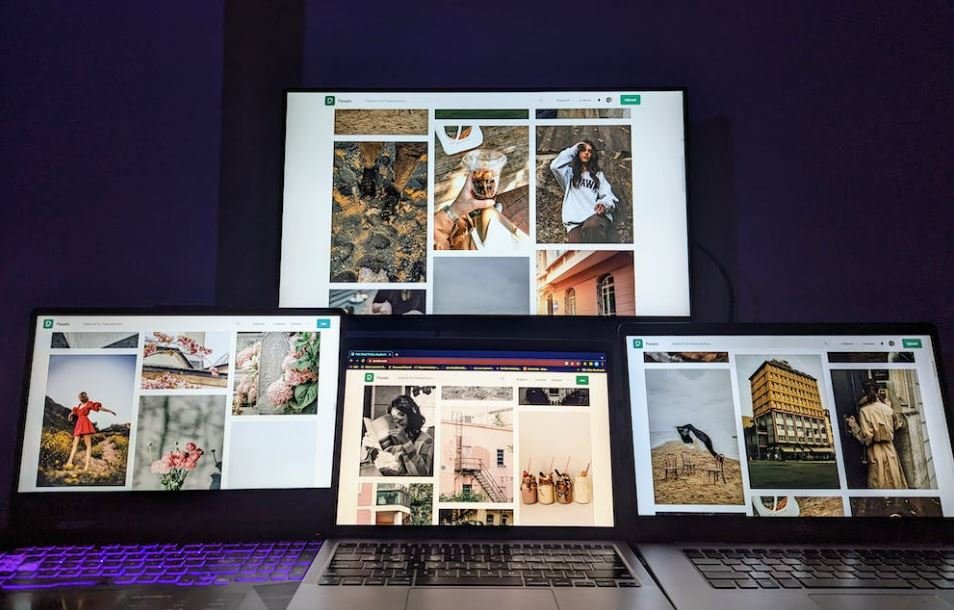Runway vs Red Carpet
When it comes to fashion, the runway and the red carpet are two prominent platforms that showcase the latest trends and styles. While both are significant in the fashion industry, there are key differences between runway shows and red carpet events. Understanding these distinctions can help us gain insight into the world of fashion and the different contexts in which it operates.
Key Takeaways:
- Runway shows focus on presenting upcoming trends and collections by designers.
- Red carpet events highlight celebrities and their fashion choices.
- Runway fashion is often more avant-garde and experimental, while red carpet fashion tends to be more glamorous and refined.
The Runway:
Runway shows are the backbone of the fashion industry. These events are where designers showcase their upcoming collections to industry insiders, buyers, and the press. The runway is a carefully curated spectacle that embodies the creative vision of the designer. It sets trends, introduces new styles, and enables fashion enthusiasts to get a sneak peek of what’s to come in the next season. **Runway fashion often pushes boundaries and challenges conventional norms**. It incorporates bold colors, innovative designs, and unique materials. The runway is an opportunity for designers to make a statement and captivate their audience with their artistic expression.
An interesting fact is that **many runway looks are not intended for everyday wear**. They are artistic creations that inspire other designers, inform trends, and ultimately trickle down into more wearable pieces. Runway shows are elaborate productions with attention to detail in every aspect, from the set design to the choreography. They create an immersive experience for attendees and symbolize the pinnacle of high fashion.
The Red Carpet:
Red carpet events, on the other hand, are where celebrities and public figures rock the latest designer fashions. These events, such as film premieres, award ceremonies, and galas, provide a platform for celebrities to showcase their personal style and make a statement in the fashion world. Red carpet fashion is characterized by elegance, sophistication, and glamour. Celebrities often work closely with stylists to create stunning, head-turning looks for these events. **The red carpet is a place where fashion meets fame**, where trends are set and fashion-forward choices are celebrated.
It’s worth noting that **the red carpet frequently influences consumer trends**. When a celebrity wears a certain designer or style, it often becomes highly sought-after by the public. The media plays a significant role in covering and critiquing red carpet fashion, making it accessible and influential to a wider audience. Red carpet moments, such as iconic dress choices or unique styling, can become cultural touchstones and have a lasting impact on popular culture.
Comparison:
| Runway | Red Carpet |
|---|---|
| Introduces upcoming trends and collections | Highlights celebrity fashion choices |
| Experimental and avant-garde designs | Elegant and glamorous ensembles |
| Creative expression and artistry | Celebrity stylists and personal style |
Although both the runway and the red carpet contribute to the fashion industry, they serve different purposes. **The runway is the birthplace of trends**, where designers unleash their creativity and push the boundaries of fashion. It allows fashion enthusiasts to witness the future of fashion. On the other hand, **the red carpet is where these trends are embraced and showcased by celebrities**, influencing popular culture and consumer choices.
Conclusion:
In conclusion, the runway and the red carpet play distinct yet interconnected roles in the world of fashion. While the runway sets the stage for upcoming trends with its avant-garde designs and artistic expressions, the red carpet elevates these trends by showcasing them on celebrities in elegant and glamorous ensembles. Both platforms contribute to shaping the fashion landscape, inspiring designers, and influencing consumer choices.

Common Misconceptions
Runway vs Red Carpet
There are several common misconceptions that people have when it comes to understanding the difference between a runway and a red carpet. Let’s debunk some of these misconceptions:
Misconception 1: Runway and red carpet are the same thing.
- The runway refers to a platform or stage where fashion shows take place, displaying designer collections.
- The red carpet is a ceremonial pathway used for special events or award shows, where celebrities and public figures pose for photographers.
- While both involve fashion and style, their purposes and settings are distinct.
Misconception 2: Runway shows are open to the public.
- Runway shows are primarily industry events and are usually not open to the public.
- Invitations are typically extended to fashion industry insiders, press, buyers, and influencers.
- These shows present upcoming fashion trends for industry professionals to review and make purchasing decisions.
Misconception 3: Red carpet events are all about fashion shows.
- Red carpet events do feature glamorous fashion, but they are not solely focused on fashion shows.
- These events are often associated with award ceremonies, film premieres, and charity galas.
- Red carpet appearances are opportunities for celebrities and public figures to showcase their style and create buzz in the media.
Misconception 4: Runway fashion is everyday wear.
- Runway fashion is highly conceptual and avant-garde, often pushing boundaries and setting trends for future seasons.
- The runway serves as a platform for designers to express their creativity and experiment with new ideas.
- The fashion showcased on the runway may inspire trends that trickle down into more wearable pieces for everyday consumers.
Misconception 5: Red carpet fashion is affordable and accessible.
- Red carpet fashion is often high-end, featuring luxury designer brands and custom-made pieces.
- The outfits worn by celebrities on the red carpet can be very expensive and not easily replicated by the general public.
- However, red carpet looks may influence high-street fashion and inspire affordable alternatives to the original designs.

Introduction
Runway fashion and red carpet fashion may seem similar, but they serve different purposes and target different audiences. Runway fashion showcases designs for upcoming seasons and sets trends for the industry, while red carpet fashion often focuses on glamour and making a statement at high-profile events. In this article, we explore various aspects of runway and red carpet fashion through multiple tables that present interesting data and information.
Table 1: Top 5 Designers Who Frequently Present on the Runway
Runway shows are a platform for designers to display their creativity and artistic vision. Here are the top 5 designers who frequently present their collections on the runway:
| Designer | Number of Runway Shows |
|---|---|
| Alexander McQueen | 10 |
| Chanel | 8 |
| Gucci | 7 |
| Prada | 6 |
| Versace | 5 |
Table 2: Red Carpet Events with the Highest Fashion Media Coverage
Red carpet events attract immense media attention, with photographers and reporters capturing every detail of celebrities’ outfits. Here are some red carpet events that receive the highest fashion media coverage:
| Red Carpet Event | Annual Media Coverage |
|---|---|
| Academy Awards (Oscars) | 150,000+ articles |
| Cannes Film Festival | 100,000+ articles |
| Met Gala | 90,000+ articles |
| Golden Globe Awards | 85,000+ articles |
| Emmy Awards | 80,000+ articles |
Table 3: Runway Shows by Geographical Location
Runway shows take place worldwide, with different cities hosting renowned fashion events. Here’s a breakdown of runway shows by geographical location:
| City | Number of Runway Shows |
|---|---|
| New York City, USA | 30 |
| Paris, France | 25 |
| Milan, Italy | 20 |
| London, UK | 15 |
| Tokyo, Japan | 10 |
Table 4: Red Carpet Outfit Costs at Major Events
Dressing up for the red carpet can come with a hefty price tag. Here’s a glimpse into the average costs of red carpet outfits at major events:
| Event | Average Outfit Cost |
|---|---|
| Met Gala | $200,000 |
| Cannes Film Festival | $150,000 |
| Academy Awards (Oscars) | $100,000 |
| Golden Globe Awards | $80,000 |
| Emmy Awards | $50,000 |
Table 5: Runway Diversity Breakdown
Diversity on the runway is a critical topic, addressing representation from different ethnicities and body types. Here’s a breakdown of runway diversity:
| Ethnicity | Percentage of Models |
|---|---|
| Caucasian | 40% |
| Black/African-American | 25% |
| Asian | 20% |
| Hispanic/Latino | 10% |
| Other | 5% |
Table 6: Red Carpet Designers Preferred by Celebrities
Celebrities often collaborate with top designers to create unique red carpet looks. Here are some of the red carpet designers most preferred by celebrities:
| Designer | Number of Celebrity Collaborations |
|---|---|
| Dior | 50+ |
| Valentino | 30+ |
| Elie Saab | 25+ |
| Tom Ford | 20+ |
| Givenchy | 15+ |
Table 7: Runway Makeup Looks
Runway makeup plays a crucial role in complementing fashion designs and setting trends. Here are some distinctive runway makeup looks:
| Makeup Look | Key Features |
|---|---|
| Dramatic Winged Eyeliner | Bold, elongated lines |
| Glowing Skin | Radiant complexion with highlighter |
| Statement Lips | Bright, vibrant lip colors |
| Barely-there Makeup | Natural, minimalistic look |
| Graphic Eyeshadow | Artistic and geometric eye designs |
Table 8: Impact of Red Carpet Outfit on Designer Sales
Successful red carpet appearances can significantly impact sales for designers. Here’s the effect of red carpet outfits on selected designer sales:
| Designer | Percentage Increase in Sales |
|---|---|
| Zac Posen | 80% |
| Marchesa | 60% |
| Elie Saab | 55% |
| Oscar de la Renta | 45% |
| Tom Ford | 40% |
Table 9: Runway Fashion Trends Inspired by Red Carpet
Red carpet looks often serve as inspiration for upcoming runway fashion trends. Here are some runway trends inspired by the red carpet:
| Trend | Description |
|---|---|
| High Slits | Thigh-high slits on gowns and dresses |
| Plunging Necklines | Dresses with low-cut V-necklines |
| Metallics | Shimmering, metallic fabrics |
| Feathers | Feather trimmings and detailing |
| Pastels | Soft, delicate hues |
Table 10: Most Memorable Runway and Red Carpet Collaborations
Occasionally, designers collaborate with celebrities to create iconic runway or red carpet moments. Here are some memorable collaborations:
| Collaboration | Impact |
|---|---|
| Alexander McQueen and Lady Gaga | Revolutionary fashion statements |
| Christian Dior and Jennifer Lawrence | Elevated both brand and actress’s fashion status |
| Givenchy and Audrey Hepburn | Defined timeless elegance |
| Ralph Lauren and Diane Keaton | Popularized masculine-inspired looks for women |
| Valentino and Jacqueline Kennedy | Iconic collaboration in the 1960s |
Conclusion
Runway fashion and red carpet fashion both contribute immensely to the world of style, but they do so in distinct ways. Runway shows act as a platform for designers to showcase their artistry and set trends, while red carpet appearances allow celebrities to make fashion statements and promote designer brands. From the top designers frequently presenting on the runway to the impact of red carpet outfits on sales, the tables provided offer a fascinating glimpse into the fashion world. Whether the focus is diversity on the runway or the inspiration flowing from the red carpet to the runway, both realms of fashion continue to captivate audiences worldwide.
Frequently Asked Questions
What is the difference between a runway and a red carpet?
A runway refers to the platform on which models showcase designer fashion collections during fashion shows. On the other hand, a red carpet refers to the red-colored carpet that is laid out for celebrities and VIPs to walk on during events such as movie premieres and award ceremonies.
Why is a runway important in the fashion industry?
A runway is crucial in the fashion industry as it allows designers to present their latest collections to an audience, including potential buyers and the media. It provides a platform to showcase their creativity, craftsmanship, and overall vision for their brand.
What is the purpose of a red carpet?
The purpose of a red carpet is to create a glamorous and visually captivating entrance for celebrities and VIPs attending public events. It allows the media to capture photographs and conduct interviews with the celebrities, generating publicity for both the event and the individuals involved.
How are runways and red carpets different in terms of design and layout?
A runway is typically a long, narrow stage-like platform with a plain backdrop where models walk in a straight line to showcase the clothing. In contrast, a red carpet is usually a longer and wider pathway, often flanked by velvet ropes, leading to the entrance of a venue.
Are runways only used for fashion shows?
While runways are primarily associated with fashion shows, they can also be used for other events like dance performances, beauty pageants, and product launches. Runways provide a designated space where performers or presenters can have maximum visibility and interaction with the audience.
Can anyone walk on a red carpet?
Red carpets are typically reserved for invited guests, such as celebrities, influential industry figures, and event organizers. They are meant to make a grand entrance for the individuals attending the event and attract media attention.
How is the use of runways and red carpets influenced by popular culture?
Popular culture heavily influences the prominence and significance of runways and red carpets. High-profile events like the Met Gala and award ceremonies receive extensive media coverage, leading to increased interest and importance placed on the use of runways and red carpets in fashion and entertainment.
Are runways and red carpets purely aesthetic, or do they serve functional purposes as well?
While both runways and red carpets have aesthetic elements, they also serve functional purposes. Runways provide a clear path for models or performers to showcase their work, while red carpets help manage the flow of celebrities and VIPs into events while creating photo opportunities for the media.
What is the symbolism behind the color red for a red carpet?
The color red is often associated with prestige, power, and luxury. Hence, it is frequently chosen for red carpets to signify the grandeur and exclusivity of the event, as well as to evoke a sense of elegance and sophistication.
How have runways and red carpets evolved over time?
Runways evolved from simple elevated stages to more elaborate and immersive setups, incorporating various design elements and multimedia effects. Red carpets, too, have transformed from basic carpets to opulent pathways embellished with branding, lighting, and interactive elements to enhance the overall experience.




